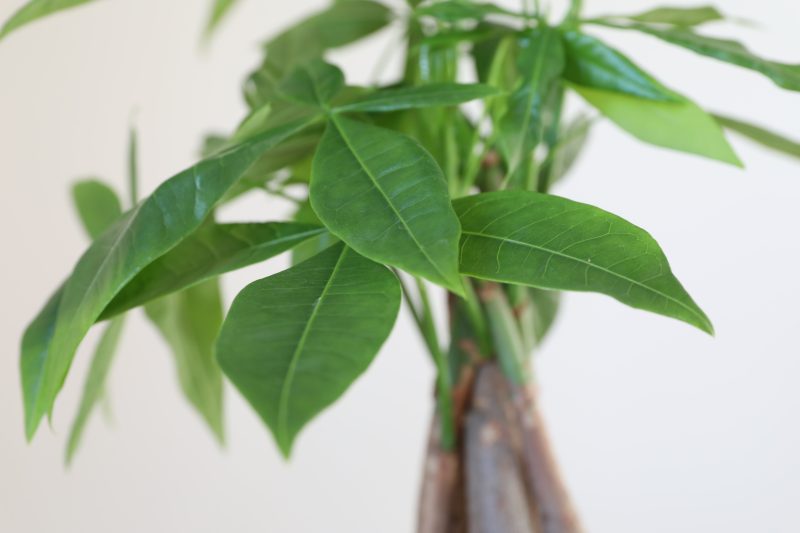The money tree (Pachira aquatica) is a popular indoor plant admired not only for its attractive braided trunk and lush green leaves but also for the symbolism of good fortune and prosperity it carries. As it grows, the money tree can outgrow its pot, making repotting an essential task to maintain its health and vigor. Repotting allows the plant to access fresh nutrients, encourages root growth, and prevents the roots from becoming cramped or circling within the pot.
This complete guide will walk you through the process of repotting a money tree properly, including when to repot, how to prepare the plant, the best soil to use, and aftercare to ensure your plant thrives in its new home.
Table of Contents
Understanding When to Repot a Money Tree

Knowing the right time to repot your money tree is crucial. Repotting too early or too late can stress the plant or stunt its growth. Generally, money trees benefit from repotting every two to three years, depending on their growth rate and pot size.
Signs that indicate your money tree needs repotting include roots growing out of the drainage holes, the plant becoming top-heavy or unstable, slow growth despite proper care, or the soil drying out rapidly after watering. Additionally, if you notice the roots are densely packed and circling inside the pot when you inspect, it is a clear indication the plant needs more space.
Repotting is best done in spring or early summer when the plant is entering its active growing phase. Repotting during dormancy in winter can be stressful and slow the plant’s recovery.
Preparing to Repot Your Money Tree
Before you start repotting, gather all necessary materials to ensure a smooth process. This includes a new pot slightly larger than the current one, fresh potting mix, gardening gloves, pruning shears, and water.
Choosing the right pot is essential. Opt for a container that is one to two inches larger in diameter than the existing pot. The new pot should have adequate drainage holes to prevent waterlogging, which can lead to root rot.
Selecting the right soil is equally important. Money trees prefer well-draining soil rich in organic matter. A mix designed for tropical plants or a blend of peat moss, perlite, and sand works well to maintain moisture without becoming waterlogged.
Removing the Money Tree from Its Current Pot
Start by gently watering the plant a day before repotting to ease removal and reduce stress. When ready, carefully turn the pot on its side and gently tap the sides and bottom to loosen the root ball.
Support the base of the money tree near the soil surface and slowly slide the plant out. Avoid pulling the trunk or stems, as this can cause damage. If the plant is stubborn, run a knife or spatula around the pot’s inner edge to break any root binding.
Once removed, examine the root ball closely. Look for signs of root rot such as black, mushy roots and trim these away with clean pruning shears. Also, trim any excessively long or circling roots to encourage healthy new growth.
Preparing the New Pot and Soil
Before placing the plant into the new pot, prepare the base by adding a layer of fresh soil mix to the bottom. This provides a healthy foundation for the root ball to settle on.
If the new pot lacks drainage holes, consider drilling some or using a layer of gravel at the bottom to facilitate water flow and prevent water accumulation.
Lightly moisten the soil mixture before use to help roots adapt and reduce shock after repotting.
Transferring the Money Tree to Its New Pot
Place the money tree gently into the new pot, positioning it so the top of the root ball sits about an inch below the pot rim. This space allows room for watering.
Fill in around the root ball with fresh potting mix, firming the soil lightly with your fingers to eliminate air pockets without compacting the soil too much. Avoid burying the trunk deeper than it was in the original pot.
After filling, water the plant thoroughly until water drains from the bottom. This helps settle the soil and establishes good root-to-soil contact.
Caring for Your Money Tree After Repotting
Post-repotting care is vital to help the plant recover and thrive. Place the money tree in a bright location with indirect sunlight. Avoid direct sun exposure immediately after repotting, as the plant may be more vulnerable to stress.
Maintain a consistent watering schedule, allowing the top inch of soil to dry out between waterings. Overwatering during this period can lead to root rot.
Avoid fertilizing for at least a month after repotting to prevent burning the roots. Once established, use a balanced liquid fertilizer monthly during the growing season.
Monitor the plant closely for signs of stress such as wilting, yellowing leaves, or leaf drop. These symptoms often improve with proper care and time.
Common Mistakes to Avoid When Repotting Money Trees
One common mistake is choosing a pot that is too large, which can retain excess moisture and cause root rot. Always opt for a slightly larger pot rather than a dramatically bigger one.
Overhandling the roots or damaging the trunk during removal can lead to transplant shock. Handle the plant gently, supporting the base and minimizing disturbance.
Using unsuitable soil that retains too much water or lacks nutrients will affect plant health. Always use a well-draining, nutrient-rich potting mix.
Neglecting post-repotting care such as watering correctly or protecting the plant from harsh conditions may delay recovery.
Benefits of Repotting Your Money Tree
Repotting rejuvenates your money tree by providing fresh soil rich in nutrients and space for roots to expand. This encourages stronger growth, more vibrant foliage, and can stimulate flowering in mature plants.
Regular repotting also prevents root-bound conditions, which restrict water and nutrient uptake and can cause the plant to become weak and unhealthy.
Repotting is an opportunity to inspect and prune roots, removing any damaged or diseased parts, thereby improving the overall health and longevity of the plant.
Tips for Maintaining a Healthy Money Tree Between Repottings
While repotting is important, consistent care throughout the year ensures your money tree stays healthy. Place your plant in a spot with bright, indirect light and avoid sudden changes in temperature or drafts.
Water your money tree when the top inch of soil feels dry, usually every one to two weeks, depending on humidity and temperature. Use room temperature water to avoid shocking the roots.
Clean the leaves occasionally with a damp cloth to remove dust and improve photosynthesis. Rotate the plant regularly to encourage even growth.
Monitor for pests such as spider mites and aphids, treating infestations promptly with appropriate natural or chemical controls.
By following these detailed steps and tips, repotting your money tree becomes a manageable task that promotes the plant’s health and longevity. Proper timing, gentle handling, suitable soil, and attentive aftercare are key elements to ensuring your money tree continues to thrive and bring beauty and luck to your space for years to come.
FAQs About Repotting Money Trees
When is the best time to repot a money tree?
The best time to repot a money tree is in spring or early summer, during its active growing season, to help the plant recover quickly and grow well.
How often should I repot my money tree?
Generally, repotting every two to three years is ideal, or when you notice roots growing out of drainage holes or the plant becomes root-bound.
What type of soil is best for repotting a money tree?
A well-draining potting mix rich in organic matter, such as a blend of peat moss, perlite, and sand, works best to keep the roots healthy and prevent waterlogging.
Should I prune the roots when repotting?
Yes, trimming away any dead, damaged, or circling roots encourages new growth and prevents root rot.
How should I care for my money tree after repotting?
Place it in bright, indirect light, avoid direct sunlight initially, water moderately, and delay fertilizing for about a month to reduce stress.






